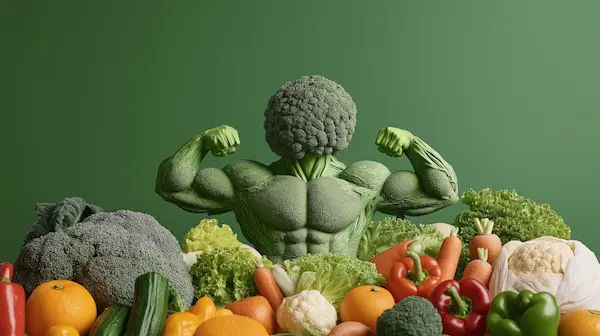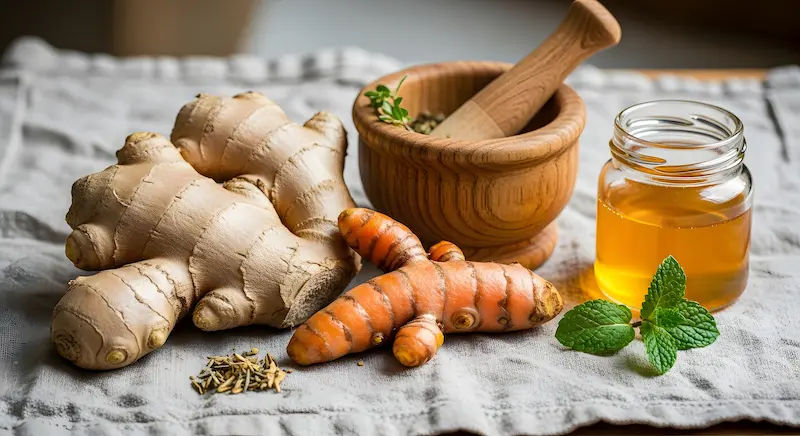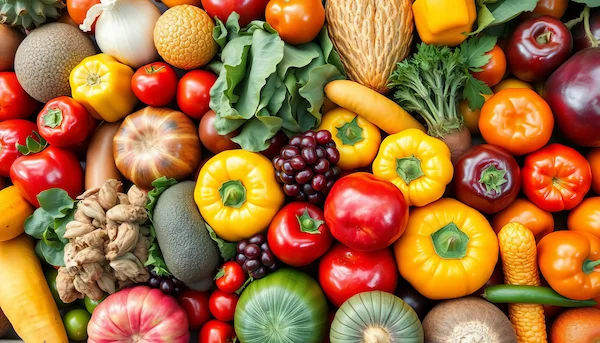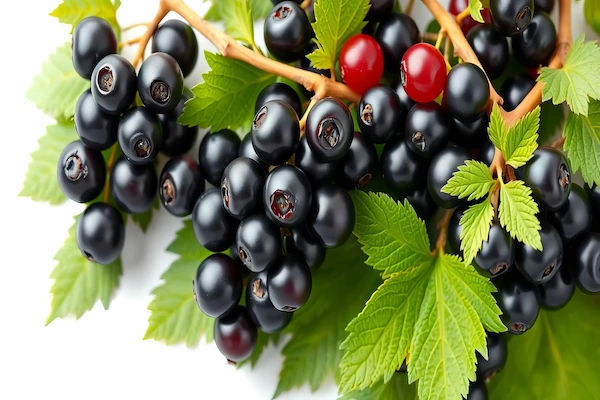Craft Your Ultimate Anti-Oxidants Salad: A Recipe for Vitality
Know about the importance of anti-oxidant diet, its role in body’s defense, salad prepared rich in greens, fruits, nuts for vitality and more.

Written by Dr. Vasanthasree Nair
Reviewed by Dr. Rohinipriyanka Pondugula MBBS
Last updated on 13th Oct, 2025
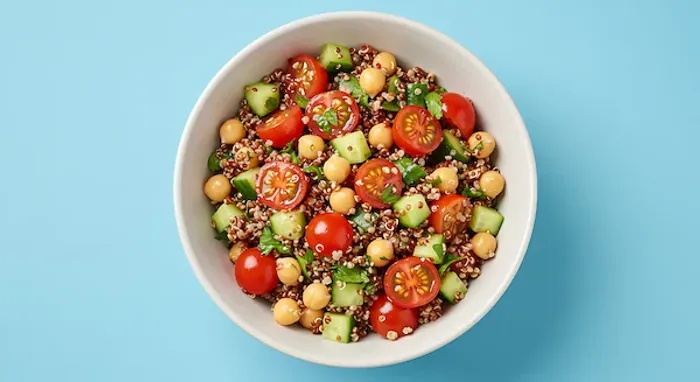
Introduction
In a world full of environmental pollutants, processed foods, and daily stressors, our bodies are constantly under attack from unstable molecules called free radicals. This silent assault, known as oxidative stress, is linked to aging, inflammation, and a host of chronic diseases. But nature provides a powerful shield: antioxidants. While popping a supplement might seem easy, the most effective way to harness this power is through your diet. This article is your definitive guide to creating the ultimate anti-oxidants salad—a delicious, synergistic masterpiece designed to flood your system with a broad spectrum of these protective compounds. We'll move beyond a simple list of ingredients to explore the science of food synergy, revealing how combining specific elements amplifies their benefits.
Why an Antioxidant-Rich Diet is Your Body's Best Defense
The concept of antioxidants can seem abstract, but their role is incredibly concrete. Think of your body as a complex machine that constantly uses oxygen. This process, while essential for life, creates byproducts called free radicals. These are molecules missing an electron, making them highly reactive and destructive as they "steal" electrons from your healthy cells, proteins, and DNA. This damage is oxidative stress. While our bodies produce some antioxidants naturally, the modern onslaught of UV radiation, pollution, and unhealthy diets overwhelms this innate system. This is where dietary antioxidants come in. They generously donate an electron to neutralize free radicals without becoming unstable themselves, effectively halting the chain reaction of cellular damage. Consistently eating an antioxidant-rich diet is like providing your body's internal repair crew with an endless supply of top-quality tools.
Health topic carousel:
Doctor speciality: General Practitioner
Text: Consult a Top General Practitioner for Personalised Advice
Understanding Free Radicals and Oxidative Stress
To appreciate the ultimate anti-oxidants salad, it's crucial to understand the enemy. Free radicals aren't inherently evil; they are produced during exercise and by immune cells to fight pathogens. The problem is chronic excess. Factors like smoking, excessive alcohol, fried foods, and exposure to toxins dramatically increase free radical production. When these molecules outnumber antioxidants, oxidative stress occurs. This state is a primary contributor to the visible signs of aging (like wrinkles) and, more importantly, to the development of serious conditions including heart disease, cognitive decline, and certain cancers. Therefore, consuming a diet high in antioxidants isn't just a wellness trend; it's a proactive defense mechanism against some of the most pressing health challenges of our time.
The Measurable Power of Antioxidants: What is ORAC?
With so many foods claiming to be "high in antioxidants," how can we compare them? Scientists use a metric called ORAC (Oxygen Radical Absorbance Capacity). The ORAC score measures the ability of a food to neutralize specific oxygen radicals in a test tube. While it's not a direct measure of health impact in the human body (as absorption varies), it's an excellent guide for comparing the antioxidant potential of different foods. For example, half a cup of blueberries has an ORAC score of about 4,669, while the same amount of kale scores around 1,770. By building our ultimate anti-oxidants salad with high-ORAC ingredients, we ensure we're creating a meal with maximum cellular protective potential.
Building the Ultimate Anti-Oxidants Salad: The Foundation
Creating the ultimate salad is like building a house; it requires a strong foundation and the right materials. It’s not about randomly throwing together "healthy" foods. It's about strategic combination for synergistic effect. We will select ingredients from four key categories to ensure a broad spectrum of antioxidants, textures, and flavors.
The Leafy Green Base: More Than Just a Bed
Don't settle for nutrient-weak iceberg lettuce. Your base is the canvas. Opt for deeply colored greens like spinach or kale. Spinach is rich in lutein and zeaxanthin, antioxidants critical for eye health, while kale is a powerhouse of quercetin and kaempferol, which have strong anti-inflammatory effects. A unique tip: massaging kale with a tiny bit of lemon juice and olive oil for a minute breaks down its tough cellulose fibers, making it easier to digest and absorb its nutrients.
The Colorful Crusaders: Fruits and Vegetables
The vibrant pigments in plants are often the antioxidants themselves. This is where you can get creative. Include a rainbow:
Red/Purple: Beets (betaine) and blueberries (anthocyanins) are superstars. Anthocyanins are linked to improved brain function and reduced risk of heart disease.
Orange/Red: Bell peppers and cherry tomatoes are bursting with vitamin C and lycopene. Cooking tomatoes actually increases the bioavailability of lycopene, so adding a few sun-dried tomatoes is a great hack.
White/Green: Don't forget red onions (quercetin) and broccoli sprouts. Broccoli sprouts can contain up to 100 times more sulforaphane, a potent antioxidant, than mature broccoli.
Powerhouse Toppings: Nuts, Seeds, and Sprouts
This category adds crunch, healthy fats, and a concentrated nutrient punch. Walnuts are unique for their high alpha-linolenic acid (an omega-3) and antioxidant content. Pecans have one of the highest ORAC scores among nuts. Sprinkle on sunflower seeds for vitamin E and chia seeds for fiber and antioxidants. Including a handful of sprouted lentils or chickpeas adds a boost of bioavailable enzymes and protein.
The Absorption Activator: Choosing the Right Healthy Fat
This is the most commonly missed step in building the ultimate anti-oxidants salad! Many crucial antioxidants, like the beta-carotene in carrots and the lutein in spinach, are fat-soluble. This means they require dietary fat to be absorbed into your bloodstream. Without it, you'll miss out on a significant portion of the benefits. Your salad dressing is not just for flavor; it's a functional component. Opt for extra virgin olive oil, which is rich in polyphenols and monounsaturated fats. Avocado oil is another excellent choice. A quarter of an avocado sliced into the salad also does the trick beautifully.
The Ultimate Anti-Oxidants Salad Recipe
This recipe is designed for maximum nutrient density and absorption. Feel free to adjust quantities based on preference.
Ingredient List with ORAC Values (Approximate per serving)
Base: 2 cups chopped kale (massaged) (ORAC: ~3,540)
Veggies: 1/2 cup shredded red cabbage (ORAC: ~2,496), 1/4 cup chopped red bell pepper, 1/4 cup cooked and cooled beets (ORAC: ~1,776)
Fruit: 1/4 cup blueberries (ORAC: ~4,669)
Toppings: 2 tbsp chopped walnuts (ORAC: ~5,385 per 100g), 1 tbsp pumpkin seeds, 1/4 avocado.
Dressing: 1.5 tbsp extra virgin olive oil, juice of half a lemon, 1 tsp Dijon mustard, a pinch of salt and black pepper.
Step-by-Step Preparation Guide
1. Prepare the Base: Place the chopped kale in a large bowl. Add a teaspoon of your olive oil and a squeeze of lemon juice. Using your hands, massage the kale for 60-90 seconds until it turns a brighter green and softens in texture.
2. Combine Ingredients: To the massaged kale, add the red cabbage, bell pepper, beets, and blueberries.
3. Make the Dressing: In a small jar or bowl, whisk together the remaining olive oil, lemon juice, Dijon mustard, salt, and pepper until emulsified.
4. Assemble and Serve: Pour the dressing over the salad and toss thoroughly to coat. Top with walnuts, pumpkin seeds, and slices of avocado. Serve immediately.
Pro-Tips for Maximum Nutrient Retention
Don't Over-Dress: Dress the salad just before eating to prevent wilting and nutrient loss in the water that leaches out.
Chop Last Minute: Chopping vegetables increases surface area exposed to air, which can degrade some vitamins like vitamin C. Chop your ingredients close to serving time.
Embrace Cooking (Sometimes): As mentioned, lightly cooking tomatoes and carrots can make certain antioxidants like lycopene and beta-carotene more bioavailable. Adding these cooked and cooled to your salad is a smart move.
Beyond the Bowl: Incorporating Antioxidants into Your Daily Life
While this salad is a powerhouse, vibrant health comes from consistency. Think of this recipe as a template. You can apply the same principles to other meals. Add berries to your morning oatmeal, snack on a handful of nuts, include a serving of leafy greens with your dinner, and use spices like turmeric and cinnamon liberally, as they are also packed with antioxidants. If you are dealing with specific health concerns related to inflammation or nutrient deficiencies, it’s always wise to seek personalized advice. If your condition does not improve after focusing on dietary changes, consider consulting a doctor online with Apollo24|7 for further evaluation and a tailored health plan.
Conclusion
Building the ultimate anti-oxidants salad is an empowering act of self-care. It moves beyond simple nutrition into the realm of strategic nourishment. By understanding the roles of different colored plants, the importance of healthy fats for absorption, and simple preparation techniques to preserve nutrients, you can transform a daily meal into a powerful tool for combating oxidative stress. This approach to eating supports everything from glowing skin and sustained energy to long-term resilience against disease. So, take this guide, head to your local market, and start experimenting. Your body’s cellular defense system will thank you for every vibrant, delicious bite.
Health topic carousel:
Doctor speciality: General Practitioner
Text: Consult a Top General Practitioner for Personalised Advice
Consult Top Specialists for Personalised Tips

Dr. Mainak Baksi
General Practitioner
13 Years • MBBS , MD (MPH)
Howrah
Mainak Baksi Clinic, Howrah
(50+ Patients)

Dr. Jacqueline M. Kuruvilla
General Practitioner
8 Years • MBBS
Bengaluru
Apollo Clinic, Sarjapur Road, Bengaluru

Dr. K Vijaya Kumar
General Practitioner
5 Years • MBBS
Mottur
PADMAVATHI CLINIC, Mottur

Dr. Zulkarnain
General Physician
2 Years • MBBS, PGDM, FFM
Bengaluru
PRESTIGE SHANTHINIKETAN - SOCIETY CLINIC, Bengaluru

Dr. Abhirup Chakrabarti
General Practitioner
10 Years • MBBS
Chennai
Dr Abhirup Chakrabarti, Chennai
Consult Top Specialists

Dr. Mainak Baksi
General Practitioner
13 Years • MBBS , MD (MPH)
Howrah
Mainak Baksi Clinic, Howrah
(50+ Patients)

Dr. Jacqueline M. Kuruvilla
General Practitioner
8 Years • MBBS
Bengaluru
Apollo Clinic, Sarjapur Road, Bengaluru

Dr. K Vijaya Kumar
General Practitioner
5 Years • MBBS
Mottur
PADMAVATHI CLINIC, Mottur

Dr. Zulkarnain
General Physician
2 Years • MBBS, PGDM, FFM
Bengaluru
PRESTIGE SHANTHINIKETAN - SOCIETY CLINIC, Bengaluru

Dr. Abhirup Chakrabarti
General Practitioner
10 Years • MBBS
Chennai
Dr Abhirup Chakrabarti, Chennai
More articles from Diet for Immunity Boosting
Frequently Asked Questions
Can I make this ultimate anti-oxidants salad ahead of time for meal prep?
Yes, but with a strategy. Keep the dressing separate and store it in a small jar. Chop sturdy vegetables like carrots and bell peppers, but wait to chop more delicate ingredients like tomatoes. Add the dressing and soft ingredients only when you're ready to eat to prevent sogginess and nutrient loss.
Are antioxidant supplements as good as getting them from food?
Generally, no. Whole foods provide a complex matrix of antioxidants, fiber, and other nutrients that work together synergistically. Supplements often isolate single compounds, which may not have the same effect and can sometimes be harmful in high doses. The best approach is to focus on a diet rich in whole, colorful foods.
What is the best time to eat an antioxidant-rich salad?
There's no wrong time! Many people enjoy it for lunch to get a sustained energy boost without the afternoon slump. Eating it as a starter for dinner can help improve nutrient absorption from the rest of your meal.
Can I use frozen fruits like blueberries in the salad?
Absolutely. Frozen berries are often frozen at peak ripeness, preserving their nutrient content. Just thaw them slightly or give them a quick rinse under cold water before adding to avoid coloring the entire salad.
I have a nut allergy. What can I use instead of walnuts?
Seeds are a perfect alternative! Sunflower seeds and pumpkin seeds provide healthy fats, crunch, and a great antioxidant profile. Toasted chickpeas would also add a lovely crunch and protein.
